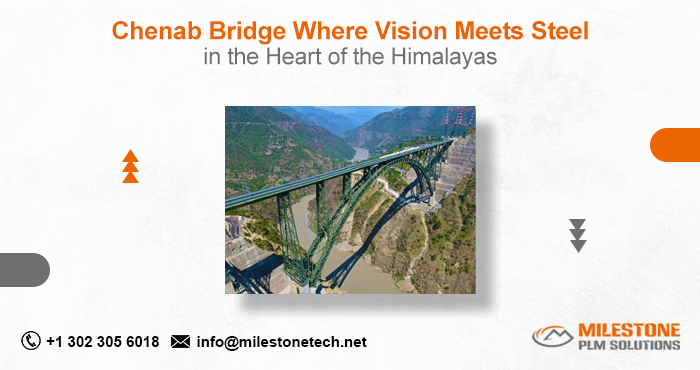Dubai Creek Tower: Pushing Architectural and Structural Boundaries Beyond the Burj Khalifa
- Milestone PLM Solutions
- Nov 5, 2024
- 3 min read
Dubai, the city of superlatives, never shies away from architectural ambition. Following the success of the iconic Burj Khalifa, the city is on a mission to break its own record by constructing Dubai Creek Tower, a groundbreaking structure designed to rise above its predecessor. With construction underway, Dubai Creek Tower aims to become the new pinnacle of architectural and structural ingenuity, pushing the boundaries of what is possible in modern engineering.

The Vision Behind Dubai Creek Tower
Conceived by Emaar Properties and designed by the renowned architect Santiago Calatrava, Dubai Creek Tower is part of Dubai Creek Harbour, an ambitious urban project near the historical Dubai Creek. The tower is envisioned as the crown jewel of the development, which will include residences, hotels, retail spaces, and green areas, all crafted to create a vibrant community.
Emaar’s vision for Dubai Creek Tower goes beyond height. It aims to be an architectural symbol that redefines the Dubai skyline and serves as a global icon of innovation and elegance. Inspired by the natural beauty of a lily flower and traditional Islamic architecture, the design showcases an elaborate network of cables stemming from the central tower, reminiscent of a minaret—a fitting tribute to the region’s heritage.
Breaking New Records in Structural Design
One of the most impressive features of Dubai Creek Tower is its anticipated height. While its exact height remains undisclosed, it is widely speculated to surpass the 828-meter Burj Khalifa, potentially making it the tallest structure in the world. However, achieving this feat is no simple task, especially given Dubai’s desert climate and unique geological conditions.
The structural design of Dubai Creek Tower incorporates innovative engineering techniques to achieve stability at extreme heights. The tower's slender core, stabilized by a complex web of cables anchored to the ground, is designed to withstand high winds and seismic activity. This combination of central stability and lateral support is unprecedented in high-rise construction, setting a new standard for structural engineering in tall buildings.
Technological Advancements and Sustainability
Dubai Creek Tower is also a showcase for cutting-edge technology, designed to enhance both the construction process and the structure’s operational efficiency. Innovations in Building Information Modeling (BIM) play a pivotal role in this project. BIM software is used to streamline construction, monitor real-time progress, and resolve potential issues before they arise on-site. This approach reduces waste, optimizes resource usage, and improves collaboration among various teams involved in the project.
In terms of sustainability, Dubai Creek Tower is designed with several eco-friendly elements, including energy-efficient lighting, a smart ventilation system, and renewable energy sources. With sustainability as a core consideration, the tower aims to minimize its environmental footprint, aligning with Dubai’s broader commitment to green urban planning.
Engineering Challenges and Solutions
Constructing a tower of this magnitude comes with a unique set of engineering challenges. The combination of height and slender design poses significant stability challenges, especially in Dubai's intense heat and high wind conditions. To address this, engineers have devised a comprehensive structural support system. The central core of Dubai Creek Tower is constructed using high-strength materials, ensuring resilience against extreme weather conditions. The cable array surrounding the tower provides additional stability by distributing the building’s load across a broader base.
Another engineering hurdle is the soil composition around Dubai Creek. The area consists of loose, sandy soil, which requires deep foundations to stabilize the structure. Engineers have addressed this by constructing reinforced foundations that extend deep into the earth, ensuring the tower remains firmly rooted even during extreme conditions.
A New Tourist Attraction and Global Icon
Much like Burj Khalifa, Dubai Creek Tower is expected to attract millions of visitors from around the world. The tower’s pinnacle will feature an observation deck, offering panoramic views of Dubai and its surrounding areas. This observation deck, envisioned as a floating platform encircled by open-air balconies, will provide a breathtaking perspective of the cityscape. Moreover, Dubai Creek Tower will be equipped with advanced digital displays, interactive experiences, and immersive technologies to enhance the visitor experience.
Beyond Burj Khalifa: Redefining Dubai’s Architectural Identity
While Burj Khalifa remains an iconic landmark, Dubai Creek Tower is poised to usher in a new era for Dubai's skyline. This ambitious structure represents more than a record-breaking height; it is a testament to Dubai’s commitment to architectural innovation and sustainable urban development. By pushing the limits of engineering and design, Dubai Creek Tower embodies the city’s vision of the future—an awe-inspiring example of what human creativity and technological progress can achieve.
Conclusion
Dubai Creek Tower is more than just a skyscraper; it is a marvel of modern engineering, a work of art, and a symbol of Dubai’s unyielding ambition. As it rises to unprecedented heights, this architectural masterpiece will not only redefine the Dubai skyline but also set new standards in architecture and engineering. Dubai Creek Tower stands as a tribute to human ingenuity, showcasing what is possible when vision meets technology and innovation knows no bounds


